Indian Polity: February 2025 Current Affairs | Current Affairs & General Knowledge - CLAT PDF Download
Marital Rape in India
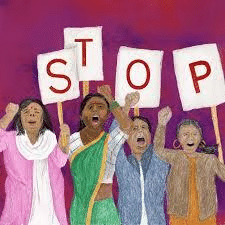
Why in News?
The recent Gorakhnath Sharma vs State of Chhattisgarh Case, 2019, has highlighted significant legal issues surrounding marital rape in India. The High Court ruled that a husband cannot be charged with rape or unnatural sex with his wife if she is above the age of 15, irrespective of her consent. This decision was based on Exception 2 under Section 375 of the IPC, which provides an exemption for husbands in such cases. Concurrently, the Supreme Court is hearing petitions aimed at criminalizing marital rape, a cause supported by women’s rights activists.
Key Takeaways
- Marital rape is currently not recognized as a crime in India.
- The age of consent has been a contentious issue, previously set at 15 years, now increased to 18 years following court rulings.
- Judicial rulings emphasize the importance of consent and autonomy in marital relationships.
Additional Details
- Marital Rape: Defined as forced sex or sexual assault between spouses. It is not classified as a crime in India unless the couple is living separately, where non-consent leads to rape charges against the husband.
- Legal Stance: According to Section 375(2) of IPC, sexual intercourse between a man and his wife is not considered rape if the wife is above 15 years. Recent rulings have adjusted this age to comply with evolving legal standards.
- Judicial Rulings: The Independent Thought vs UoI Case, 2017, and the KS Puttaswamy Case, 2017, have reinforced the need for recognizing marital rape, especially for minors, emphasizing sexual autonomy as part of privacy rights.
- In 2023, the Bombay High Court emphasized that consent cannot be assumed in cases involving minor wives, while the Madhya Pradesh High Court ruled on the irrelevance of consent in unnatural sex cases.
- The ongoing debate around marital rape in India illustrates the conflict between personal autonomy, legal equality, and cultural norms. While several nations have enacted laws against it, India continues to maintain legal protections for husbands. There is an urgent need for legislative clarity that balances individual rights with societal norms.
What are Arguments For and Against Criminalizing Marital Rape?
Arguments For Criminalization
- Violation of Autonomy: Every individual has the right to refuse sex, including within marriage.
- Legal Equality: Exempting husbands from rape charges violates constitutional rights.
- POCSO Act Applicability: Non-consensual sex should be a crime for both minors and married adults.
Arguments Against Criminalization
- Threat to Marriage: Criminalization could destabilize marital relationships.
- Existing Protections: Current domestic violence laws already provide avenues for protection.
- Potential Misuse: There is concern about false accusations in divorce or custody disputes.
What can be Done to Curb Marital Rape?
Recommendations
- Jaya Jaitley Committee Recommendations: Propose increasing the minimum marriage age for women to 21 to promote gender equality.
- Legislative Reforms: Amend laws to remove immunity for marital rape and recognize spousal consent as essential.
- Alternative Legal Frameworks: Expand existing laws to include marital sexual violence with stronger civil remedies.
- Global Best Practices: Study international laws to develop a culturally sensitive marital rape law that aligns with global human rights standards.
- This complex issue requires a nuanced approach to reconcile legal protections with societal values, ultimately aiming to enhance the rights and dignity of all individuals within marriages.
Obscenity Laws in India
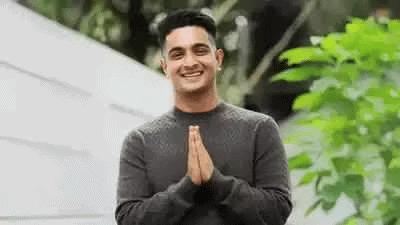
Why in News?
Ranveer Allahbadia, the founder of the YouTube channel 'Beer Biceps', is currently under investigation by the Mumbai police for allegedly making obscene comments during a guest appearance on a YouTube show. This incident has sparked discussions around the legal frameworks governing obscenity in India and the implications for freedom of speech.
Key Takeaways
- Article 19(1)(a) of the Indian Constitution grants freedom of speech and expression.
- Article 19(2) imposes reasonable restrictions on this freedom concerning public order, decency, and morality.
- Obscenity is defined as anything that offends modesty or decency, or is considered lewd or filthy.
- Various laws such as Section 294 of the BNS and Section 67 of the Information Technology Act govern obscenity in India.
Additional Details
- Legal Framework: Obscenity laws in India include Section 294 of the BNS, which punishes the sale and distribution of obscene materials, and Section 67 of the IT Act, targeting online transmission of obscene content. For first offenders, the punishment can be up to 2 years in prison and fines.
- Judicial Evolution: The Supreme Court of India has moved from the Hicklin Test to the Community Standards Test, emphasizing that obscenity should be judged based on contemporary societal norms and context.
- International Perspectives: In the U.S., the Miller Test is used to determine obscenity based on community standards, while the U.K. has updated its definitions and regulations through the Criminal Justice and Immigration Act, 2008.
- Humor can serve as a tool for political critique, social change, and coping with trauma, yet it raises concerns about public morality, especially when it crosses into obscenity.
- The controversy surrounding Ranveer Allahbadia underscores the delicate balance between creative freedom and societal sensitivities in India. While humor and satire are vital for expression, they must be navigated with responsibility to avoid legal repercussions and public outrage.
Limits to the Right to Access Justice
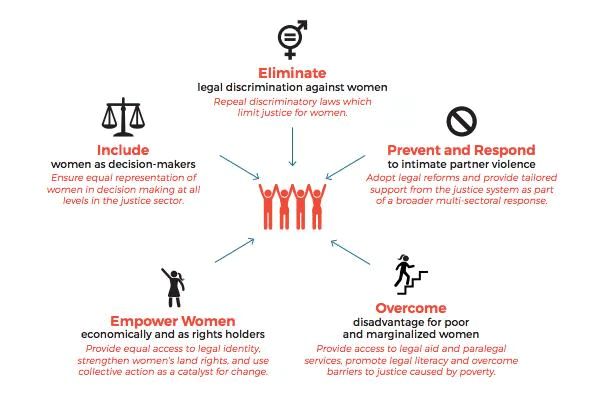
Why in News?
The Supreme Court (SC) of India recently imposed fines on a petitioner for engaging in frivolous litigation and forum shopping, which reflects the misuse of judicial resources. The petitioner had been filing multiple, meritless petitions in an attempt to overturn a service dismissal, highlighting issues of legal misuse.
Key Takeaways
- The Supreme Court ruled that while the right to access justice is a fundamental right under Article 21, it is not absolute.
- Frivolous petitions disrupt judicial time and integrity, leading to delays in justice.
Additional Details
- Case Background: The petitioner had challenged his dismissal for misconduct in various legal forums, including the Industrial Tribunal, High Court, and Supreme Court, despite facing repeated rejections.
- SC Ruling: The SC affirmed the importance of maintaining the integrity of the legal system, stating that frivolous petitions undermine the justice process.
- Judicial Rulings:In the case of Anita Khushwa v. Pushpa Sadan(2016), the SC reiterated that access to justice is fundamental under Articles 21 and 14, emphasizing four key components:
- Effective adjudicatory mechanisms.
- Reasonable accessibility in terms of distance.
- Speedy adjudication.
- Affordable access to the judicial process.
- In Buddhi Kota Subbarao v. K. Parasaran (1996), the SC upheld judicial finality, dismissing petitions for lack of evidence and ruling against endless challenges to higher court decisions.
The ruling by the Supreme Court serves as a reminder of the need to respect judicial processes and the significance of responsible legal action. It emphasizes that while individuals have the right to seek justice, this right must be exercised judiciously to maintain the integrity and efficiency of the legal system.
Shankari Prasad Case and the First Amendment Act

Why in News?
The Shankari Prasad Singh Deo v. Union of India case, decided in 1951, was a pivotal moment in Indian constitutional law, as it challenged the First Amendment Act, 1951, which limited the Right to Property.
Key Takeaways
- The First Amendment Act was aimed at facilitating land reforms in post-independence India.
- It introduced the Ninth Schedule to protect certain laws from judicial review.
- The Supreme Court upheld the amendment, affirming the government's authority to amend fundamental rights.
Additional Details
- First Amendment Act, 1951: This amendment included key provisions that altered the judicial landscape regarding land reforms and fundamental rights in India. It introduced the Ninth Schedule, which includes laws that cannot be challenged in courts, particularly to protect land reform laws.
- Protection of Land Reforms: Articles 31A and 31B were added to shield land reform laws from judicial scrutiny, allowing the government to acquire land from zamindars without compensation, countering the original fundamental rights outlined in Articles 19 and 31.
- The Supreme Court's ruling distinguished between ordinary laws, which must adhere to fundamental rights, and constitutional amendments, which can modify them.
- The ruling in the Shankari Prasad case set a significant precedent for future legal interpretations regarding the amendment of fundamental rights, eventually leading to further landmark cases like I.C. Golaknath v. State of Punjab and Keshavananda Bharati v. State of Kerala.
- These cases shaped the understanding of the basic structure of the Constitution, affirming that while Parliament can amend the Constitution, it cannot alter its essential framework.
Competitive and Cooperative Federalism
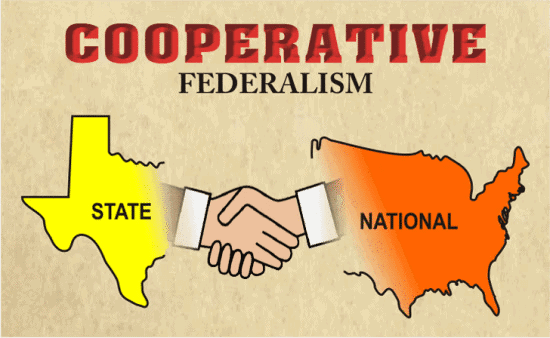
Why in News?
The government has emphasized various initiatives to foster competitive and cooperative federalism and its benefits.
Key Takeaways
- Understanding the dual framework of competitive and cooperative federalism.
- State-level reforms and initiatives that exemplify these federalism types.
- Constitutional provisions that support inter-state collaboration.
- Benefits and challenges associated with this federal structure.
Additional Details
- Competitive Federalism: This system promotes horizontal (state-state) and vertical (Centre-state) competition aimed at attracting investment, improving governance, and enhancing services. The 15th Finance Commission has introduced indicators like tax and fiscal efforts to evaluate state performance, influencing fund allocation.
- State-Level Reforms:Examples include:
- Rythu Bandhu (Telangana): A direct income support scheme for farmers.
- KALIA (Odisha): A farmer assistance scheme complementing the central PM Kisan Yojana.
- Vibrant Gujarat Summit: An initiative focused on attracting global investment.
- Cooperative Federalism: This approach emphasizes collaboration between the Centre and states to ensure effective governance, balanced development, and shared best practices. Key initiatives like the Goods and Services Tax (GST) and Ayushman Bharat require cooperation between the two levels of government.
- Constitutional Provisions: The Seventh Schedule of the Indian Constitution divides legislative powers between the Centre and states. Article 261 ensures recognition of public acts and judicial proceedings across states, promoting uniformity.
- Inter-State Council (ISC): Established under Article 263, it resolves intergovernmental disputes and was made a permanent body in 1990, following the Sarkaria Commission recommendations.
- This federal structure allows states to tailor policies to local needs, leading to enhanced economic efficiency, innovation in governance, and improved public service quality. However, challenges like quasi-federalism, taxation disputes, and unchecked competition pose significant risks.
Benefits of Competitive and Cooperative Federalism
- Economic Efficiency: States can design policies that cater to local needs, fostering investment and job creation.
- Policy Innovation: States can experiment with various governance models, leading to innovative solutions.
- Fiscal Discipline: States are encouraged to balance revenue generation with expenditure management to attract investments.
- Public Service Quality: Healthy competition drives improvements in essential services like infrastructure and healthcare.
- Balanced Regional Development: Collaboration helps reduce regional disparities in development.
- Facilitates Resource Sharing: Joint initiatives enhance resource utilization in areas like infrastructure and disaster management.
Challenges in Competitive and Cooperative Federalism
- Quasi-Federalism: The Union's superior legislative powers can override state authority, creating conflict.
- Taxation Disputes: Constitutional provisions favor the Centre, leading to reduced state taxation powers.
- Unchecked Competition: States may engage in reckless competition, resulting in excessive tax breaks and fiscal mismanagement.
- Conflict Between FC and GST Council: Discrepancies in tax-sharing recommendations create imbalances in federalism.
- Inequitable Distribution of Central Tax Revenue: Disparities in funding can hinder growth in less developed states.
Initiatives to Promote Competitive and Cooperative Federalism
- Investment Friendliness Index (IFI): Set to launch in 2025, this index will assess states' investment attractiveness.
- PPP Project Pipelines: Required planning for three-year PPP projects to attract private investment.
- Business Reform Action Plan (BRAP): Drives state-level reforms through rankings and implementation.
- Finance Commission (FC): Promotes equitable financial distribution while incentivizing governance and economic performance.
- National Manufacturing Mission (NMM): Provides a unified policy framework to enhance state competition in business.
- India Infrastructure Project Development Fund (IIPDF): Offers support to ensure equitable contributions to national infrastructure development.
Moving forward, enhancing the role of NITI Aayog and strengthening the Inter-State Council will be crucial for addressing economic disparities and improving governance. Clear definitions of roles for the Finance Commission and GST Council can help prevent conflicts and promote cooperative federalism effectively.
Expenditure on Higher Education
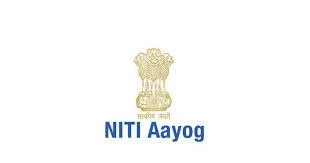
Why in News?
The NITI Aayog has published a groundbreaking report titled ‘Expanding Quality Higher Education through States and State Public Universities’, focusing specifically on the role of States and State Public Universities (SPUs) in enhancing the quality of higher education.
Key Takeaways
- Overall Education Expenditure: Jammu & Kashmir leads the country with an education spending of 8.11%, followed by Manipur at 7.25%, while Delhi has a significantly lower allocation of 1.67%.
- Higher Education Expenditure: Bihar has the highest expenditure on higher education at 1.56%, followed closely by Jammu & Kashmir (1.53%) and Manipur (1.45%). Telangana has the lowest at 0.18%.
- Per Youth Education Spending: States like Kerala, Tamil Nadu, Maharashtra, and Andhra Pradesh are among the top spenders on higher education, whereas states such as Rajasthan, Punjab, and Chhattisgarh are lagging behind.
- University Density: The national average university density is 0.8 universities per 1 lakh eligible population aged 18-23 years. Sikkim has the highest density at 10.3, while some regions have as low as 0.2.
Additional Details
- University Density: This metric indicates the number of universities available for the eligible youth population. A higher density suggests better access to higher education facilities, essential for fostering educational opportunities.
- Gender Parity: States like Kerala, Chhattisgarh, and Himachal Pradesh are noted for higher female enrolment in universities. Meanwhile, Chandigarh, Mizoram, and the Andaman & Nicobar Islands show balanced enrolments between genders.
- The findings of this report highlight significant disparities in educational spending and access across different states, emphasizing the need for targeted policies to improve the quality and availability of higher education in India.
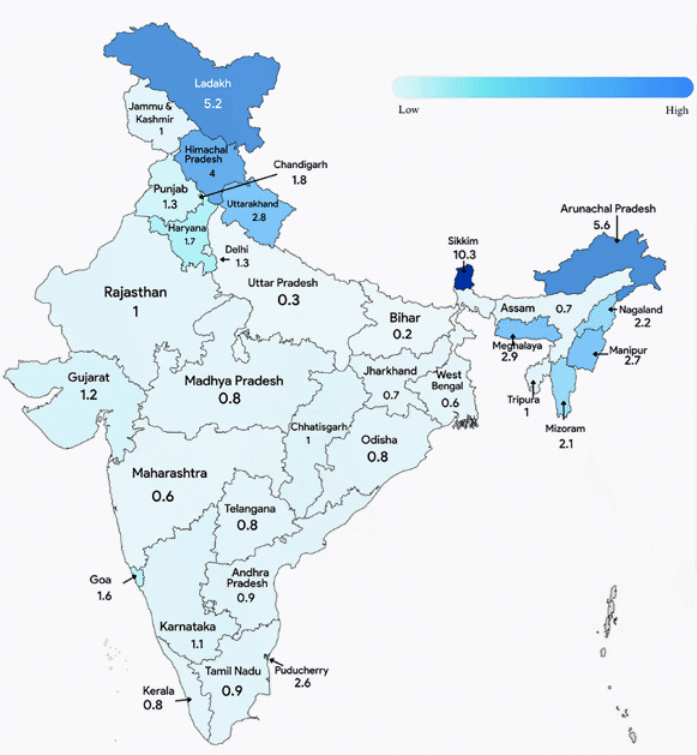
Restructuring Skill India Programme
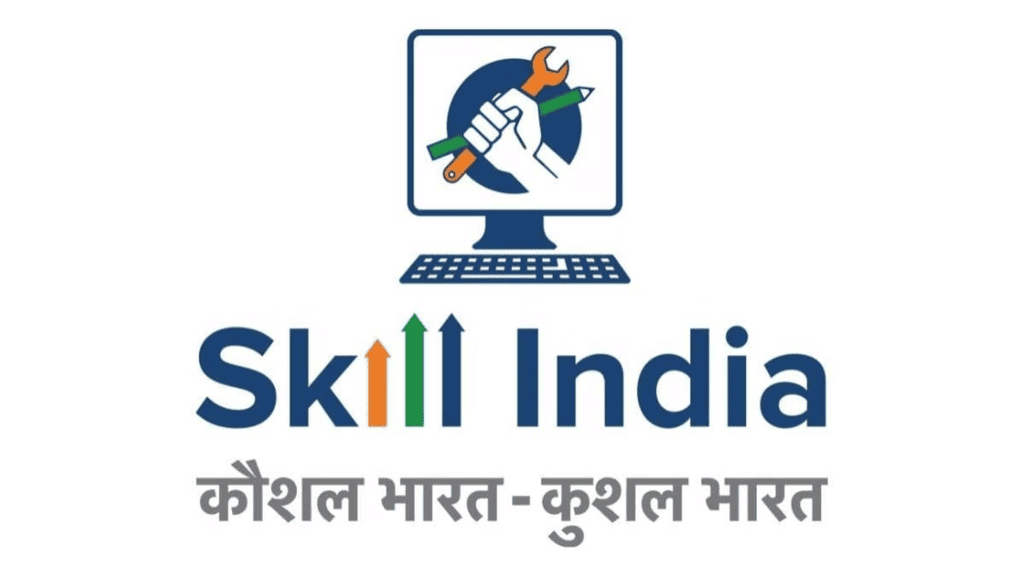
Why in News?
The Union Cabinet has sanctioned the continuation and restructuring of the Skill India Programme (SIP) by merging three primary schemes: the Pradhan Mantri Kaushal Vikas Yojana 4.0 (PMKVY 4.0), the Pradhan Mantri National Apprenticeship Promotion Scheme (PM-NAPS), and the Jan Shikshan Sansthan (JSS). This composite Central Sector Scheme will remain in effect until March 2026.
Key Takeaways
- The Skill India Programme was launched in 2015 under the Ministry of Skill Development and Entrepreneurship.
- It aims to train 40 crore individuals by 2022 across various sectors.
- Over 2.27 crore people have benefited from the programme, especially targeting rural youth, women, and marginalized communities.
Additional Details
- Skill India Programme: A national initiative designed to enhance the skill sets of individuals, aligning courses with the National Skills Qualification Framework (NSQF) and integrating with DigiLocker and the National Credit Framework (NCrF) for formal recognition.
- Key Components of Restructured SIP:
- Pradhan Mantri Kaushal Vikas Yojana 4.0 (PMKVY 4.0): Offers short-term training and skills development, introducing over 400 new courses in emerging technologies such as AI, 5G, and cybersecurity.
- Pradhan Mantri National Apprenticeship Promotion Scheme (PM-NAPS): Aims to improve apprenticeship training across industries, providing 25% of the stipend (up to Rs 1,500 per apprentice per month) through Direct Benefit Transfer.
- Jan Shikshan Sansthan (JSS) Scheme: Focuses on community-driven vocational training for women and economically weaker sections aged 15-45, offering low-cost and flexible skilling programs.
The restructuring of the Skill India Programme is a significant step toward enhancing skill development initiatives in India, providing a robust framework for training and employment opportunities for the youth, thereby fostering economic growth and development.
Bills on Parliamentary Sittings and POCSO Act, 2012
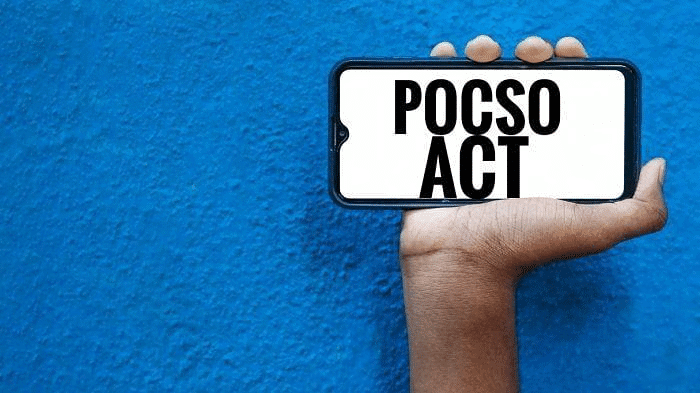
Why in News?
Recently, private members’ Bills were introduced in the Rajya Sabha, aiming to establish a minimum number of parliamentary sittings and propose amendments to the Protection of Children from Sexual Offences (POCSO) Act, 2012.
Key Takeaways
- Two separate bills were proposed to mandate a minimum of 100-120 parliamentary sittings per year.
- The current parliamentary sitting frequency has significantly decreased, with the 17th Lok Sabha averaging only 55 days annually.
- The POCSO (Amendment) Bill, 2024, seeks to enhance victim support and improve the implementation of the POCSO Act.
Additional Details
- Objective of the Bills: The bills aim to enhance productivity and improve government accountability through mandated sittings.
- The General Purposes Committee of the Lok Sabha in 1955 explored a fixed parliamentary calendar, suggesting minimum sittings of 100 days for Rajya Sabha and 120 days for Lok Sabha.
- Current Scenario: The first Lok Sabha had an average of 135 sittings per year, contrasting sharply with the current average.
- Constitutional Provisions: The Constitution does not specify a fixed number of sessions or sitting days. Articles 85 and 174 govern the summoning and prorogation of sessions.
- POCSO (Amendment) Bill, 2024: This bill mandates a 24-hour reporting rule for child abuse cases and aims to improve victim support and training for stakeholders.
- There has been a 94% increase in POCSO cases since 2017, highlighting the urgent need for reforms.
- The introduction of these bills highlights the critical need for both legislative accountability in parliamentary procedures and enhanced support for victims under the POCSO Act.
- As proposed, these changes aim to address current inefficiencies and ensure better governance and protection for vulnerable populations.
Mains Question:
Q: Evaluate the need for a minimum number of parliamentary sittings in the context of India's legislative accountability. What challenges are faced in the implementation of the POCSO Act, 2012, and suggest measures to address them?
Balancing Freebies and Welfare
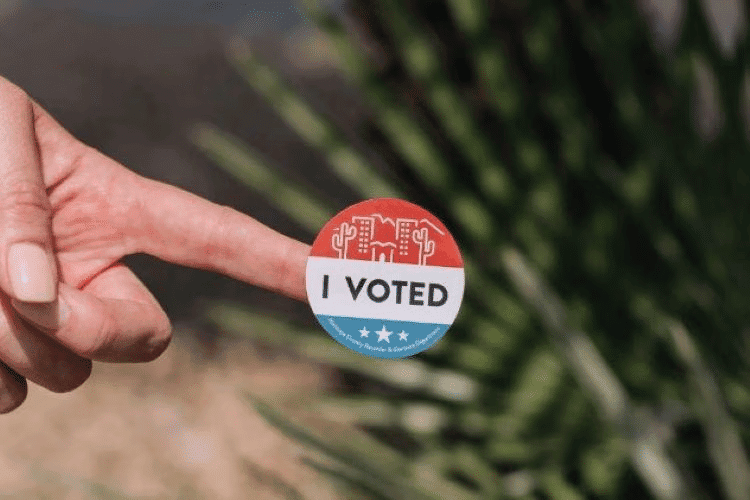
Why in News?
There is a rising trend among political parties to promise a barrage of freebies or subsidies to lure the electorate, as seen in the Delhi Assembly elections 2025. The debate around electoral freebies, often referred to as "revdi culture", is polarized—some view them as detrimental to development, while others consider them essential for socio-economic progress. The RBI defines freebies as "a public welfare measure that is provided free of charge."
Key Takeaways
- Electoral freebies can empower women and boost financial independence.
- Freebies may lead to long-term fiscal challenges for states.
- The Supreme Court's stance on freebies highlights their legislative nature.
Additional Details
- How Freebies Help in Socio-economic Progress:
- Women Empowerment: Cash transfers to women enhance financial independence and decision-making.
- Enhancing Human Capabilities: Welfare schemes like free food and health insurance improve dignity and reduce healthcare burdens.
- Boosting Consumer Spending: Direct cash transfers elevate demand and stimulate local economies.
- Poverty Alleviation: Schemes like the Public Distribution System ensure basic sustenance and help bridge the rich-poor gap.
- Long-Term Benefits: Early investment in nutrition offers long-term advantages for individuals and society.
- How Can Freebies Be Harmful to Development:
- Rising Revenue Deficit: Increased spending from freebies can lead to fiscal burdens.
- Higher Subsidy Expenditure: Unchecked subsidies may divert funds from essential areas like healthcare and education.
- Increased Tax Burden: Governments might raise taxes to cover costs, affecting disposable income.
- Crowding Out Investments: Excessive spending on freebies may limit resources for critical infrastructure.
- Potential Credit Default Risks: Weak fiscal health can increase credit risks for states.
- Distort Decision Making: Freebies may discourage informed voting choices.
The Supreme Court's ruling in the S. Subramaniam Balaji Case (2013) indicated that freebies fall within legislative policy, thus beyond judicial scrutiny. However, the court has recently criticized pre-election freebies, suggesting they may discourage work and create dependency.
How Freebies Differ From Welfare Schemes
- Criteria: Freebies often aim for political gain, while welfare schemes focus on social upliftment.
- Merit vs. Non-Merit Goods: Freebies include items like TVs and cash, whereas welfare schemes provide essential services like healthcare and education.
- Socio-Economic Impact: Freebies may provide short-term relief but lack structural improvements, unlike welfare schemes that enhance productivity.
- Fiscal Sustainability: Freebies can lead to excessive borrowing, while welfare schemes are backed by policy for economic inclusion.
- Political Motivations: Freebies are often distributed before elections, while welfare schemes aim for long-term development.
- Implementation Challenges: Freebies may not target the needy effectively, whereas welfare schemes are designed to address inequalities.
- Accountability and Governance: Freebies may lack transparency, leading to mismanagement, while welfare schemes require oversight and fiscal planning.
Moving forward, it is crucial to implement fiscal reforms to prevent reckless spending and to define policy guidelines that distinguish between essential welfare and electoral freebies. This will help ensure that social welfare initiatives are sustainable and effective.
SC Slams Politicisation of Sports Administration
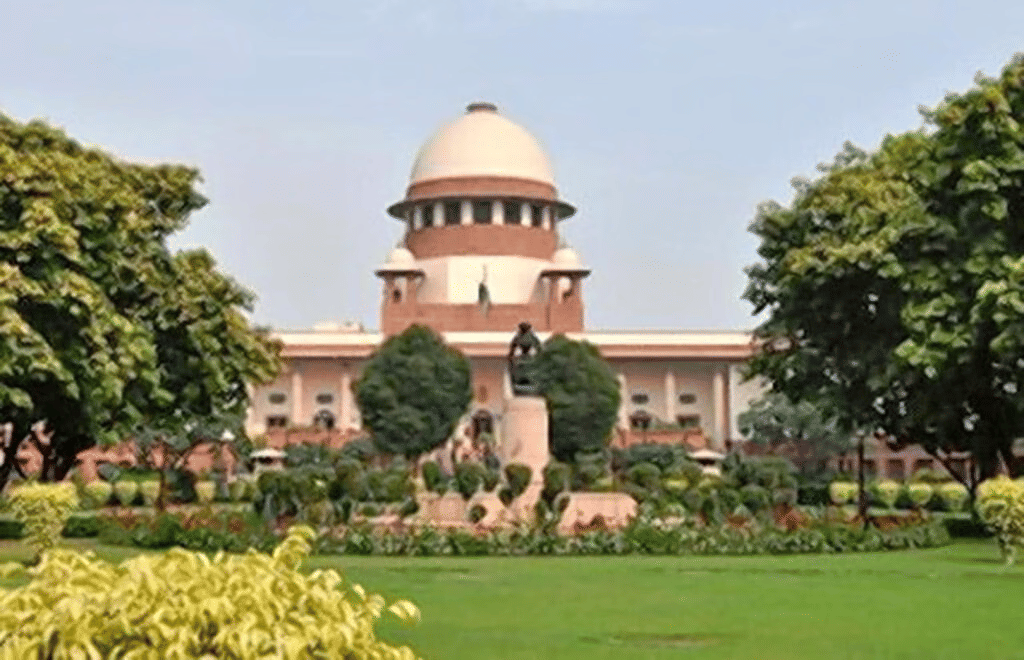
Why in News?
The Supreme Court of India has directed the Ministry of Youth Affairs and Sports to ensure that Indian kabaddi players participate in the Asian Kabaddi Championship 2025. This directive follows the suspension of the Amateur Kabaddi Federation of India (AKFI) by the International Kabaddi Federation (IKF), with the court criticizing the political interference and bureaucratic control in sports administration.
Key Takeaways
- The Supreme Court has mandated the Ministry of Youth Affairs and Sports to facilitate Indian kabaddi players' participation in upcoming championships.
- The AKFI was suspended due to governance issues and failure to maintain an elected body.
- The Court emphasized the need for immediate action regarding team selection and training camps.
Additional Details
- About AKFI: The AKFI is the apex governing body for Kabaddi in India, overseeing all forms of the sport, including National and Indoor Kabaddi. It is headquartered in Jaipur, Rajasthan and is recognized by the Ministry of Youth Affairs and Sports.
- Concerns Regarding AKFI: The federation faces allegations of opaque elections, mismanagement, and political monopolization, which raises issues of nepotism and fair representation.
- The Delhi High Court intervened by appointing Justice (Retd) S.P. Garg as administrator to manage AKFI's affairs amid the management issues.
- The IKF suspended AKFI primarily due to the lack of an elected body, putting India's international Kabaddi participation at risk.
- The Supreme Court instructed Justice Garg to transition authority to a newly elected body by December 2023 and ensure India's participation in the Asian Kabaddi Championship.
- The Supreme Court has expressed serious concerns over the politicization of sports administration in India, noting that sports associations perform better under the leadership of athletes rather than bureaucrats or politicians. Issues of mismanagement, lack of transparency, and inadequate athlete representation have been highlighted as significant problems within sports federations.
- The need for reforms, including a central regulatory body and increased athlete empowerment, is crucial for the future of sports administration in India.
PM-JAY’s Impact on Cancer Treatment

Why in News?
A recent study published in The Lancet reveals a significant reduction in delays for starting cancer treatments across India, especially among those benefiting from the Pradhan Mantri Jan Arogya Yojana (AB PM-JAY), showing a remarkable 90% improvement.
Key Takeaways
- Improved Timely Initiation of Treatment: There has been a 36% overall improvement in timely cancer treatment, with a striking 90% increase among AB PM-JAY beneficiaries since 2018.
- Significant Reductions in Treatment Delays: Delays have notably decreased in treatments for reproductive, genitourinary, breast, and blood cancers.
- Demographic Insights: Younger patients (under 30 years: 77%) and those with higher education levels (70.2%) have experienced better access to timely treatment.
- Insurance Coverage Benefits: Accessibility improved for 69% of patients due to insurance, while higher-income groups encountered fewer delays.
Additional Details
- Challenges in Cancer Treatment:The study highlights several challenges affecting treatment timeliness, including:
- Delayed Diagnosis and Treatment: Extended wait times for radiotherapy, chemotherapy, and surgery can lead to decreased survival rates.
- Limited Healthcare Infrastructure: India currently has only 779 radiotherapy machines, which is significantly below the WHO recommended range of 1,350 to 5,000.
- Shortage of Oncologists and Diagnostic Centers.
- High Financial Burden: Patients face high out-of-pocket expenses as AB-PMJAY does not cover diagnostics and follow-ups, with public health spending remaining below 2% of GDP, complicating affordability.
- Efforts are needed to enhance healthcare systems and financial support to address these challenges effectively.
In conclusion, while the PM-JAY scheme has positively impacted the initiation of cancer treatments in India, significant challenges remain that must be addressed to ensure equitable and timely access to care for all patients.
Revamping Digital Infrastructure in India
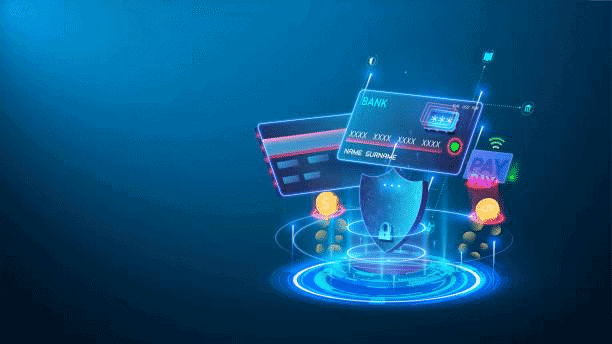
Why in News?
India's digital infrastructure has rapidly evolved, contributing 11.74% to the Gross Domestic Product (GDP) in 2022-23. This contribution is projected to reach 20% of Gross Value Added (GVA) by 2029-30. To further accelerate this growth, the Union Budget 2025-26 has sanctioned Rs 2,000 crore for the IndiaAI Mission, aimed at developing AI infrastructure and skill-building programs.
Key Takeaways
- India's digital infrastructure is crucial for its economic growth.
- The IndiaAI Mission receives significant funding to enhance AI capabilities.
- Key achievements include the growth of UPI, internet accessibility, and Aadhaar implementation.
Additional Details
- Unified Payments Interface (UPI): Launched in 2016, UPI now powers 49% of global real-time transactions, with digital transactions soaring from Rs 707.93 crore in 2016 to Rs 23.24 lakh crore in 2024. The number of participating banks has increased from 35 to 641, and it has expanded to 7 countries, including UAE, Singapore, and France.
- Internet Infrastructure: Telephone connections grew from 933 million in 2014 to 1,188.70 million in 2024. Internet connections surged from 25.15 crore to 96.96 crore (an increase of 285%). Broadband penetration rose by 1,452%, from 6.1 crore in 2014 to 94.92 crore in 2024.
- BharatNet: Launched in 2011, it aims to provide affordable high-speed internet to Gram Panchayats. By 2025, it has connected 2.14 lakh Gram Panchayats with 6.92 lakh km of optical fiber laid.
- Aadhaar: Serving as a digital identity framework since 2009, Aadhaar has issued 136.65 crore cards by March 2023 and facilitated over 100 crore face authentication transactions by January 2025.
- DigiLocker & UMANG: Since 2015, DigiLocker has enabled secure access to digital documents, with 46.52 crore users as of February 2025. The UMANG app has integrated e-Government services, amassing 7.34 crore registered users.
- ONDC & GeM: ONDC, launched in 2022, promotes fair e-commerce competition and has expanded to 616+ cities with 7.64 lakh sellers. GeM, launched in 2016, streamlines government procurement with a GMV of Rs 4.09 lakh crore in FY 2024-25.
- BHASHINI: Enhancing digital access in 22+ Indian languages, BHASHINI facilitates over 100 million inferences monthly and promotes inclusive digital governance.
- The IndiaAI Mission is a flagship initiative aimed at creating a comprehensive AI ecosystem to foster innovation, research, and development in AI. With a budgetary allocation of Rs 2,000 crore, it focuses on building a robust AI infrastructure, enhancing data quality, and promoting indigenous AI technologies. The mission also aims to support AI startups, attract talent, and ensure ethical AI practices.
- To achieve a 'Viksit Bharat' by 2047, India's focus must shift to enhancing cybersecurity, expanding 5G, and promoting digital literacy. By leveraging its digital capabilities, India can drive sustainable development, improve service delivery, and empower citizens in the digital era.
SC Plea for Lifetime Ban on Convicted Politicians
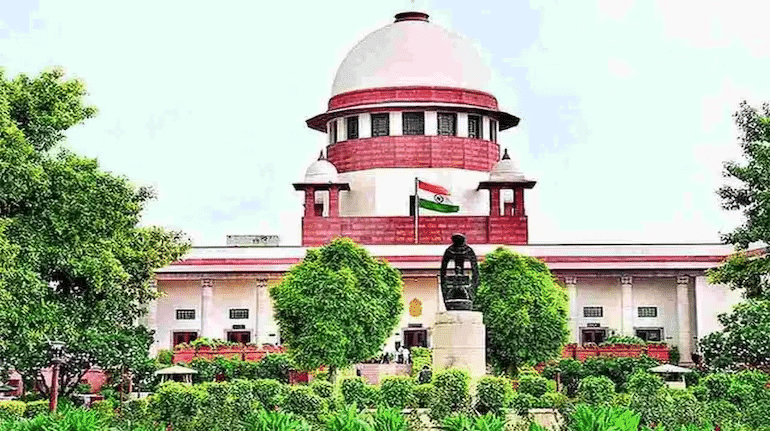
Why in News?
The Supreme Court is hearing petitions seeking a lifetime ban on convicted persons from contesting elections.
About
- The petition argues that if a convicted person is not eligible for even a junior-grade government job, how could they become law makers?
- The Supreme Court has again sought the response of the Central government and the EC on the current petition.
- Criminalisation of Politics: A report by The Association for Democratic Reforms (ADR) states that 251 (46%) of the 543 elected MPs in 2024, have criminal cases against them, and 171 (31%) face serious criminal charges including rape, murder, attempt to murder and kidnapping.
- Chances of winning for a candidate with a criminal background was 15.4% as against just 4.4% for a candidate with a clean background.
Disqualification of Convicted Person
- Section 8(3) of the Representation of the People Act, 1951 (RP Act, 1951), provides for the disqualification of a person convicted of a criminal offence and sentenced to imprisonment for not less than two years.
- Such a person is disqualified from contesting elections for a further period of six years from the date of release.
- Heinous Crimes: Under Section 8(1), individuals convicted of heinous crimes like rape, untouchability under the PCR Act, unlawful activities under UAPA, or corruption will be disqualified from holding office, regardless of their sentence length, and for six years after release.
- Section 11 of the RP Act, 1951 provides that the Election Commission (EC) may remove any disqualification or reduce the period of disqualification of a convicted person.
Arguments in Favour of Banning the Convicted Person from Contesting Elections
- Preserving Integrity: Convicted individuals, especially for serious crimes, make their candidacy detrimental to the integrity of the political system.
- Public Trust: Allowing convicted persons to run for office will undermine public trust in the electoral process and in elected representatives.
- Role Model Standards: It could send the wrong message about the acceptability of illegal or unethical behavior.
- Security and Safety: Individuals convicted of violent crimes or corruption may pose a threat to the safety of citizens.
- Social Justice: Preventing convicted persons from holding office could be seen as a safeguard for social justice, ensuring that those with a history of criminal behavior are not in positions of power where they could influence laws or policies to their benefit.
Arguments Against
- Right to Participation: Convicted individuals still retain their fundamental democratic rights, including the right to run for office and participate in the political process.
- Rehabilitation: People who have served their sentences may have reformed and should be allowed to contribute to society through public office.
- Presumption of Innocence: Banning individuals based on a conviction could be unfair if their legal status changes.
- Overreach of Power: Banning convicted persons could be seen as an overreach by the state, limiting citizens’ freedom to choose their leaders.
Past Judgements of SC
- Association for Democratic Reforms (ADR) case (2002): It mandated the disclosure of criminal records of all candidates contesting elections.
- The CEC vs Jan Chaukidar case (2013): It upheld that persons who are under trial prisoners cease to be ‘electors’ and hence not qualified to contest elections.
- However, the Parliament amended the act in 2013 to overturn this judgment allowing under trial prisoners to contest elections.
- Lily Thomas (2013)Case: The court struck down section 8(4) of the RP Act, 1951, that allowed a sitting legislator to continue as a member even after being convicted if they filed an appeal, as unconstitutional and against political justice.
- After this judgment, a sitting legislator is disqualified immediately after the sentencing for a conviction.
Conclusion
- The Law Commission in 1999 and 2014, and the EC on various occasions have highlighted the need to curb the criminalisation of politics.
- They have recommended that even persons against whom charges are framed by a competent court for an offence that entails punishment of more than five years should not be allowed to contest elections.
- However, there has been no consensus on this recommendation amongst political parties considering the risk of its misuse.
Swavalambini
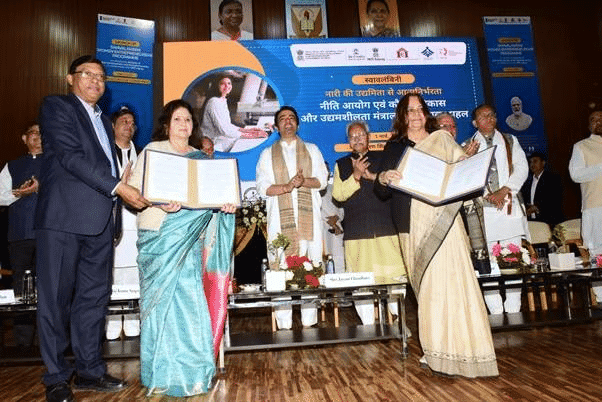
Why in News?
The Ministry of Skill Development and Entrepreneurship (MSDE), in collaboration with NITI Aayog launched “Swavalambini” in Assam, Meghalaya and Mizoram.
What is Swavalambini?
- About: Swavalambini is a women entrepreneurship program that aims to empower females in Northeast Higher Education Institutions (HEIs) with an entrepreneurial mindset, resources, and mentorship for business success.
- Program Structure: MSDE, in collaboration with Indian Institute of Entrepreneurship (IIE), Guwahati and NITI Aayog, launched a stage-wise entrepreneurial process including Entrepreneurship Awareness Programme (EAP), Women Entrepreneurship Development Programme (EDP), Faculty Development Programme (FDP), and funding.
- Successful ventures will be recognized and awarded, inspiring others and establishing a clear framework to scale women-led enterprises in India.
- Expected Outcomes: 10% of EDP trainees expected to launch successful businesses.
- Strengthens entrepreneurial culture in HEIs, making business creation a viable career path for women. Promotes women-led enterprises as a key driver of India’s economic transformation.
How Does Swavalambini Align with National Policies?
- National Education Policy (NEP) 2020: Promotes skill integration, industry collaboration, and entrepreneurship-driven education.
- Swavalambini builds on this by ensuring financial and mentorship support for women entrepreneurs.
- Women Entrepreneurship Schemes: Swavalambini strengthens initiatives like Start-Up India, Stand-Up India, PM Mudra Yojana, and Women Entrepreneurship Platform.
- Swavalambini aligns with the Union Budget 2025, which introduced a Rs 10,000 crore start-up fund and extended the 100% tax exemption on start-up profits for the first five years, providing crucial financial support for emerging women-led enterprises.
|
98 videos|951 docs|37 tests
|
FAQs on Indian Polity: February 2025 Current Affairs - Current Affairs & General Knowledge - CLAT
| 1. What is the legal status of marital rape in India? |  |
| 2. How do obscenity laws in India affect freedom of expression? |  |
| 3. What are the limitations to the right to access justice in India? |  |
| 4. What was the significance of the Shankari Prasad case in relation to the First Amendment Act? |  |
| 5. What are the key components of the Skill India Programme? |  |





















